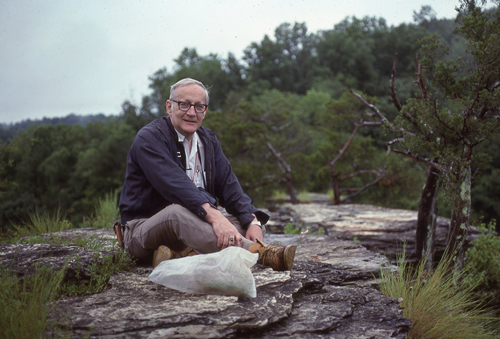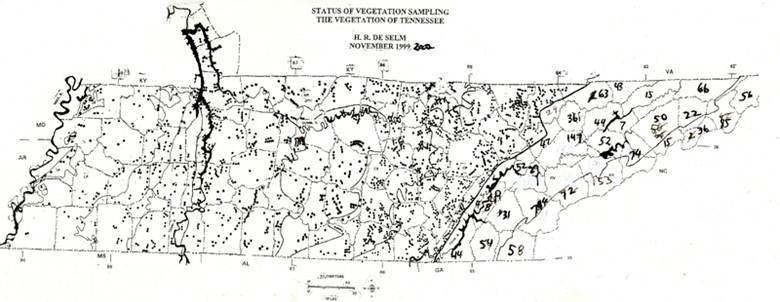
The Natural Terrestrial Vegetation of Tennessee Project
Tennessee is the richest inland state in the nation in terms of biodiversity. The integrity of its diverse ecosystems, however, is threatened by many issues. Urban sprawl, nonnative pests, and pollution are altering natural sites at an alarming rate under a changing climate. To protect Tennessee’s rich biological heritage, we need to understand its ecosystem structure and function. Restoring degraded habitats requires quantitative measurements of reference sites that best represent the ecological potential of the area. Unfortunately, the only comprehensive work on the natural terrestrial vegetation of Tennessee was not available to the organizations engaged in conservation and restoration efforts across the state prior to 2015. Professor Hal De Selm (deceased 7/12/2011) compiled the most comprehensive sample of the natural vegetation communities of Tennessee in existence. As a distinguished conservation biologist and professor of botany and ecology at the University of Tennessee, he was responsible for the conservation of some of Tennessee’s rarest ecosystems. In addition to his academic work, Dr. De Selm is perhaps best known among his friends and colleagues for his dedication to characterizing the natural heritage of Tennessee during his career and in the years following retirement. Dr. De Selm worked tirelessly to measure remnant vegetation communities across the state. He sampled over 3000 sites, primarily in old growth forests, but also in wetlands, floodplains, barrens, and glades. The body of his work occurred from 1956 – 2002 and he catalogued many reference sites that no longer exist in their natural state (e.g., conversion to development). Remarkably, this work was largely funded by Dr. De Selm and his wife, Bea De Selm with no external help. It was a labor of love. These data are a treasure to the state of Tennessee, as was he.
Dr. De Selm envisioned using his data to compose a definitive book: The Natural Terrestrial Vegetation of Tennessee, but his death kept him from realizing his dream. Over four years, UT- TIP converted his original, hand-written field sheets and over 600 quadrangle topographic maps into a database. These data have been transferred to the Tennessee Department of Conservation, Natural Heritage Program to be shared with all those who might use it for natural resource conservation. Professor De Selm’s original papers are archived in the University of Tennessee Library Archives.
